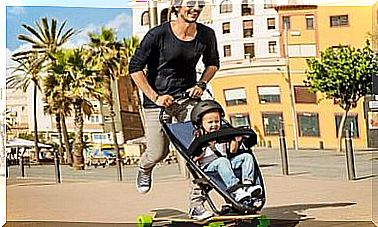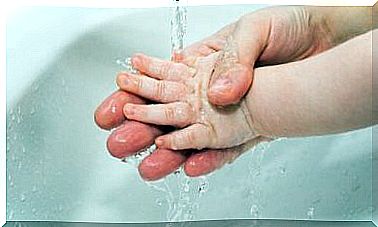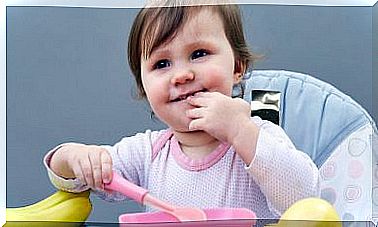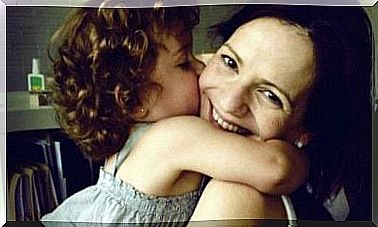Children’s Drawings And Their Meaning
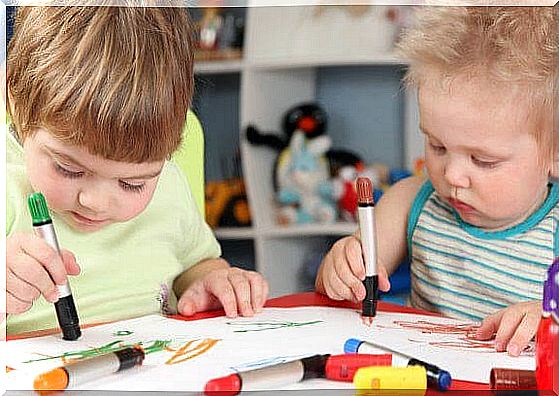
Through their drawings, children begin to describe what they feel and observe. In this article, we will tell you why it is not just pointless graffiti.
Children usually start drawing drawings sometime after the age of 18 months. It is now that they begin to draw as a way of expressing themselves. The little ones have fun drawing lines that may seem random. To them, however, they represent works of art as a product of their thoughts and ideas.
The importance of a child’s graffiti lies in the activation of their imagination and fine motor skills from an early age. These are beneficial for children to develop their talents and abilities. It also gives them a good way to express their feelings.
When children begin to form their lines and lines on a sheet of paper, they tend to be impulsive, uninhibited and out of control.
They move the whole arm to be able to cover the entire space that they have access to. This activity entertains them and keeps them busy. It also promotes the development of the early stages of artistic development and talent.
As they grow older, children’s skills become more refined and they acquire new techniques to improve their creations.
They use their colors more consciously, and the lines are more defined. When they reach school age, they build on what they learned at home and master more techniques.
When children feel curious and choose a color, do not hesitate to give it to them and teach them to hold it properly.
In this way, they can begin to draw their first artistic brushstrokes and enter the world of visual art, which will surely lead to unforgettable creations, for you as a mother, and for them.
Different types of children’s drawings and their meaning
The first phase of a child’s drawings, or doodles, begins in the early days when a child takes a chalk and deliberately tries to draw on a piece of paper. This is when the process of motor and brain coordination begins.
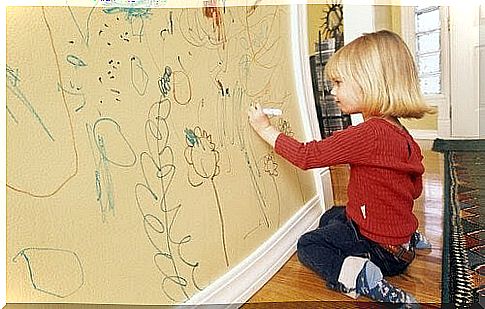
Random lines
This is a motor function that can be seen in children from about 20 months of age, also known as disorganized graffiti. It is characterized by sketch-like lines or marks with pencils or with paints that have no order or meaning. They can use one or more materials.
At this stage, the children feel that they are creating something with their hands when they draw and they use their graffiti to show their new language and as a way to communicate. In addition, they begin to get acquainted with the material.
This phase is of utmost importance because it awakens their motor skills and their attention to their surroundings. Consequently, all this will be reflected in their creations.
Controlled graffiti
This is a higher level of perception that is manifested in children from 20 to 30 months of age. From here, the ability to follow lines and shapes begins to be established. The children hold their pencils or paintbrushes better with their hand, and you can observe that they have softer and more relaxed movements when they draw.
The lines become longer and more defined, and they strive to fill the entire page with their graphic expressions.
At this level you can clearly see how they learn about the kinetic aspect of drawing. That is, the ability to use their bodies to express ideas.
They observe the world around them more clearly and accurately and then express it on paper. This is when they start drawing circles, dots and cutting lines.
Named drawings
This is also called a stage of representation, it varies from 30-48 months of age. In this phase, children already have a better ability to learn motor skills and can explain what they draw.
In general, they sketch what they see or know on paper, even if what they draw does not resemble reality.
During this phase, children begin to choose the materials to be used, what to paint and with what color.
They will also focus their drawings a little more and will feel proud of the reactions they get from adults who see their creations. Therefore, it is extremely important to encourage and congratulate them on their artwork.
The pre-stage for pictorial drawings
This stage lasts between 3-7 years of age. In this case, children represent the things, people, and animals they see.
These drawings are a little more understandable, although the human divs have a circle to the head and two lines to the body. Many children also draw fingers and hair.
When they start going to school, they use their skills in the classroom.
There they will manifest ideas, share them with their peers and gain a better insight into the world of the other children. The inspiration for their compositions will vary and they will be able to fully develop their motor skills.
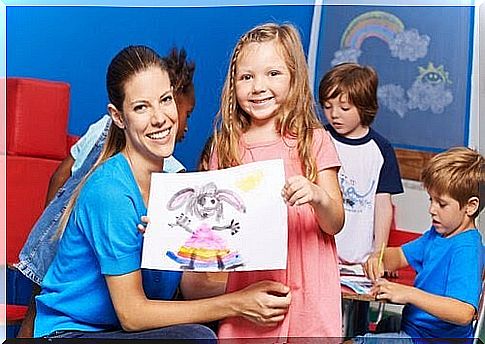
The steps that come after this are: the imaging stage, which takes place between the ages of 7 and 9, and the transitional stage, which takes place between the ages of 9 and 14 years.
It is in the latter stage that they achieve a perfection of the graffiti, which is now more like drawings. During these steps, the children openly show their skills with sketches and combinations of colors.
In summary, children’s drawings are very important because graffiti and early sketches evoke brain functions and motor skills. In the future, it will help them express themselves through various artistic compositions, such as sketches and paintings.

